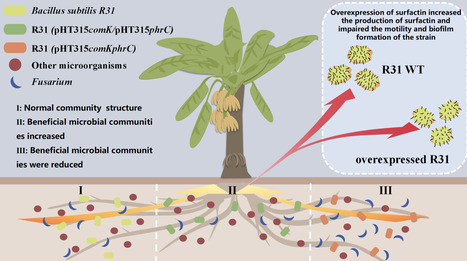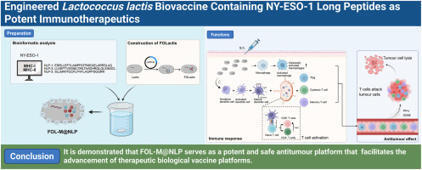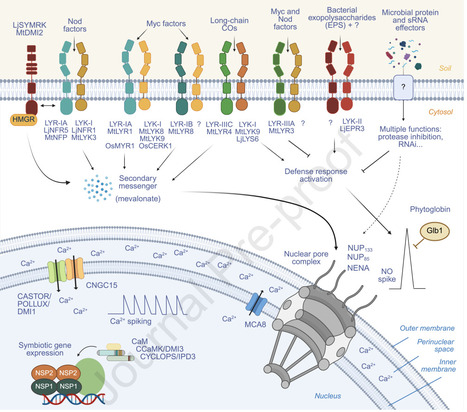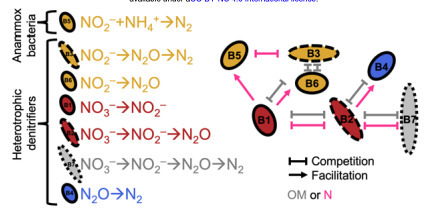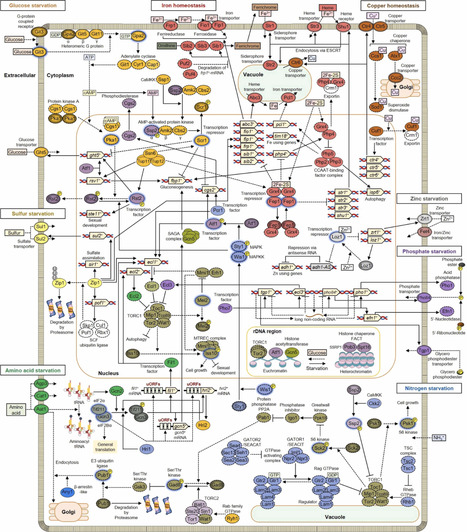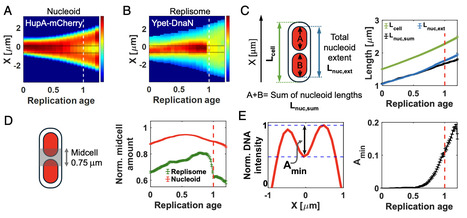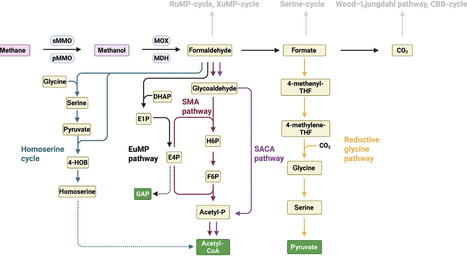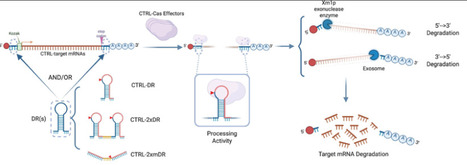 Your new post is loading...

|
Scooped by
?
Today, 2:55 PM
|
Brassinosteroids are essential plant hormones that play a central role in regulating growth, development, and stress responses. Their impact on plant architecture and productivity makes them attractive targets for crop improvement. Recent findings reveal that brassinosteroid signaling is more complex than previously thought, involving multiple layers of regulation and cross-talk with other pathways. Cutting-edge technologies, such as single-cell analysis, proteomics, and advanced imaging in model plants, are beginning to uncover this complexity at cellular resolution. Applying these tools to crop species could reveal previously unknown signaling components and enable precise plant engineering. Because mutations in this pathway often cause widespread, unintended effects, future strategies must focus on fine-tuned tissue- or organ-specific modulation. This Review highlights how new insights could drive innovative, targeted crop enhancement.

|
Scooped by
?
Today, 2:40 PM
|
Peptide vaccines have potential for tumor immunotherapy but face challenges in clinical trials, such as human leukocyte antigen limitations, potential cytotoxic T lymphocyte tolerance, short T-cell response duration, weak immune response, and other issues. Optimizing the antigens of peptide vaccines and selecting an effective delivery system are crucial for enhancing their antitumour effects. 3 multiepitope long peptides (NLP) targeting the NY-ESO-1 antigen were screened using bioinformatics methods. An engineered Lactococcus lactis strain (FOLactis) expressing FMS-like tyrosine kinase 3 ligand and the costimulator OX40 ligand was previously developed to activate immune cells. In this study, FOLactis was utilized as a biological carrier for NLP via Mg2+-based metal-organic frameworks to stimulate innate and adaptive immunity. The FOL-M@NLP were characterized, and various tumor models were established to assess the antitumour efficacy of the biovaccine. The preliminary mechanism of the immune effect induced by FOL-M@NLP was studied both in vivo and in vitro. The biovaccine FOL-M@NLP was effectively taken up by antigen-presenting cells (APCs). APCs were activated, activating the T-cell response. When FOL-M@NLP was administered subcutaneously in vivo, their antitumour activity was superior to that of NLP and FOLactis alone. The biovaccine improved the immune infiltrating state of the tumour microenvironment and metastasis niche, inhibited tumor progression and prevented recurrence. It is demonstrated that FOL-M@NLP serves as a potent and safe antitumor platform that enhances antigen peptide delivery and facilitates the advancement of therapeutic biological vaccine platforms.

|
Scooped by
?
Today, 2:20 PM
|
In the current climate change context, there is a need to develop more sustainable agri-food strategies. As an alternative to the intensive use of chemically-synthesized fertilizers and pesticides that pollute water and impact biodiversity, there is a growing interest in using beneficial microbes as biostimulants and/or bioprotection agents. However, their implementation in agriculture remains a challenge due to highly variable outcomes and benefits. Furthermore, there are major knowledge gaps about the molecular mechanisms regulating the different plant-microbe interactions. In the present review, we summarize current knowledge on the molecular mechanisms controlling the different beneficial plant root-microbe interactions, namely arbuscular mycorrhiza, the rhizobium-legume symbiosis, ectomycorrhiza, as well as fungal and bacterial endophytic associations. This includes the signalling pathways required for microbes to be recognized as beneficial, metabolic pathways that provide nutritional benefits to the plant, and the regulatory pathways modulating the extent of the symbiosis establishment depending on soil nutrient availability and plant needs. The aim is to highlight what are the main common mechanisms, as well as the knowledge gaps, in order to promote their use, either individually or in consortia, within the framework of sustainable agriculture that is less dependent on chemicals and more protective of biodiversity and water resources. pgpr

|
Scooped by
?
Today, 1:41 PM
|
Xylan, a key hemicellulose in agricultural byproducts, is significantly underutilized in biorefineries. The human gut microbiome, with its diverse enzymes, holds great potential for biocatalyst discovery. In this study, Paenibacillus sp. XP01, a xylan-degrading strain, was isolated from human feces. Genomic analysis identified a GH11 endo-β-1,4-xylanase, designated Xyn157, which exhibited a cold-active property. It retained 47% residual activity at 0 °C and 72% at 4 °C. It also exhibited catalytic activity against insoluble xylan in corncob. Enzymatic profiling confirmed its endoacting mode, with xylotriose as the minimum substrate and branched chains impairing efficiency. Xyn157 hydrolyzed alkali-pretreated corncob residues (ACR) to produce xylo-oligosaccharide (XOS), with a yield of 6.4% (w/w). In vitro fermentation of Xyn157-treated ACR, which produced hydrolysis products of ACR (CRH), significantly promoted the growth of beneficial bacteria (e.g., Bifidobacterium, Ligilactobacillus), suppressed pathogens (e.g., Enterobacter and Klebsiella), and boosted short-chain fatty acid (SCFA) production compared to the ACR group. These findings highlight Xyn157’s potential to convert insoluble xylan in ACR into functional prebiotics, expanding its applications in waste-to-prebiotic bioprocessing.

|
Scooped by
?
Today, 1:11 PM
|
The marine nitrogen cycle is regulated by diverse microbial interactions, especially in oxygen minimum zones where denitrifiers and anammox bacteria drive fixed nitrogen loss. While competition for limiting resources is well studied, the combined effects of competition and facilitation remain poorly understood when microbes require multiple, non-substitutable resources such as carbon and nitrogen. Here we develop a trait-based consumer-resource framework to test how recipient populations-whose growth relies on the metabolic products of other groups-reshape the ecological niches of their feeders and competitors. Invasion analysis shows that recipients expand either their feeder's or the feeder's competitor's niche, depending on whether they are superior competitors for resources limiting the feeder's rivals or the feeder itself. These shifts alter biogeochemical outcomes: high organic matter to nitrate supply ratios favor nitrous oxide cycling over dinitrogen gas production. Moreover, anammox bacteria occupy a wider range of organic matter and nitrate supply regimes than nitrite-reducing denitrifiers, consistent with their more frequent detectability in diverse marine environments. Together, our results link microbial interaction networks to global biogeochemical fluxes, advancing trait-based ecological theory for multi-resource systems.

|
Scooped by
?
Today, 12:51 PM
|
Complex microbial ecosystems harbor extensive intra-species diversity, but the fitness consequences of this genetic variation are poorly understood in community settings. Here we address this question by competing in vitro gut communities derived from different human donors, revealing the emergent fitness differences between conspecific strains as they competed within larger communities. Most pairs of strains experienced strong and context-dependent selection, even when their parent communities were originally selected in the same nutrient environment. However, these fitness differences typically attenuated over time due to biotic interactions within the community, leading to extended coexistence within many species, and competitive exclusion in others. These results support the view that conspecific strains can fulfill distinct ecological roles when competing within a diverse community, even when their genomic diversity exhibits the hallmarks of a single biological species.

|
Scooped by
?
Today, 12:35 PM
|
Metatranscriptomic (MetaT) sequencing provides critical insights into the gene expression and functional activity of microbial communities. However, its utility is limited by the overwhelming abundance of ribosomal RNA (rRNA), which typically represents ≥90% of total RNA. A major obstacle to efficient MetaT analysis is the removal of highly abundant rRNA transcripts present in complex microbial communities, which may contain thousands of species. Although commercial rRNA depletion kits can effectively reduce rRNA content, they are typically optimized for specific host microbiomes and often underperform in others. For example, probes designed for the human gut microbiome frequently show reduced efficiency when applied to non-human samples such as mouse cecal donor samples - a common model in microbiome research. Regardless of the depletion strategy used, designing rRNA removal probes solely based on a microbiome's taxonomic composition often requires an extensive number of probes, making the approach expensive, difficult to manufacture, and sometimes technically impractical. Here, we present RiboZAP, a species-agnostic computational pipeline for designing custom RNase H depletion probes directly from MetaT sequencing data and without prior knowledge of sample composition. Our results show that the probes generated with RiboZAP are efficient for removal of rRNA content, increasing messenger RNA (mRNA), and improving transcriptome coverage. This provides a cost-effective approach to maximize the value of MetaT sequencing.

|
Scooped by
?
Today, 12:00 PM
|
Protein design has been transformed by deep generative models ,but at the cost of interpretability, accessibility, and integration with sparse experimental feedback. Here, we introduce Genomic Perception Fusion (GPF), a biologically inspired algorithm that treats DNA not as inert code, but as a linear signal awaiting perceptual reconstruction. GPF transforms nucleotide sequences, augmented with non-coding regulatory context, into a high-order functional representation that predicts stability, solubility, and expression. Built from physicochemical first principles and literature-derived parameters, GPF runs on a laptop in under a second, yet accurately forecasts the effects of surface mutations in green fluorescent protein (GFP). Validated against computational benchmarks, GPF offers a frugal, transparent alternative to black-box design for rapid protein engineering.

|
Scooped by
?
Today, 11:33 AM
|
Biofoundries are transforming synthetic biology, with the DNA assembly workflow being critical for successful biofoundry operation. This review examines recent advances in automated DNA assembly strategies for biofoundry, focusing on three key perspectives. First, we discuss emerging platforms ranging from high-throughput and highly efficient systems to affordable and accessible solutions. Second, we explore how standardized design tools enable seamless interoperability across diverse biofoundries, facilitating protocol sharing and reproducibility. Third, we analyze the integration of machine learning into assembly workflows, in which AI-driven systems dynamically optimize protocols, diagnose failures, and close the DBTL loop through real-time learning. These convergent advances are establishing a new paradigm in which experiments continuously improve through iteration, promising to accelerate both fundamental research and industrial applications.

|
Scooped by
?
November 7, 5:08 PM
|
Chromatin immunoprecipitation and coimmunoprecipitation assays are common approaches to characterize the genomic localization and protein interactors, respectively, for a protein of interest. However, these approaches require the use of specific antibodies, which often face sensitivity and specificity issues. On the basis of TurboID, we developed proximity-labeled affinity-purified mass spectrometry and sequencing (PLAMseq), which enables, in the same workflow, identification of the genomic loci and the interacting proteome of a protein of interest. Moreover, PLAMseq can also be applied to specifically map protein interactions and ubiquitin(-like)–modified proteins. We validated PLAMseq with two well-characterized proteins, RNA polymerase II, and CTCF, with excellent robustness and reproducibility. Next, we applied PLAMseq to characterize histone H1 SUMOylation, in which study has remained elusive due to the lack of specific reagents, and found that SETDB1 binds to SUMOylated histones H1.2 and H1.4 that also colocalize with H3K9me3 at repetitive regions of the genome.

|
Scooped by
?
November 7, 5:01 PM
|
Protein solubility is a critical physicochemical property influencing protein stability, therapeutic efficacy, and overall developability in drug discovery. However, traditional experimental methods for assessing solubility are often resource-intensive and time-consuming. To address these limitations, computational approaches leveraging artificial intelligence have emerged, yet current models generally treat qualitative classification and quantitative regression as separate tasks and rely predominantly on sequence-based information, neglecting crucial structural and surface characteristics. Here, we introduce Pro4S, a novel multimodal predictive model that integrates protein language models, structural data, and surface descriptors using advanced contrastive learning techniques. Our unified framework achieves significant improvements in prediction accuracy, robustness, and generalizability for both qualitative and quantitative solubility assessments. Benchmark comparisons demonstrate that Pro4S consistently outperforms existing state-of-the-art predictors across diverse datasets. Furthermore, by applying Pro4S to the emerging area of de novo protein design, we validated a strong correlation between predicted solubility and experimental expression levels, reducing the proportion of non-expressed proteins by 52.7% while retaining 96.7% of highly expressed proteins. This highlights Pro4S's potential to serve as a reliable upfront screening tool for increasing expression success rates and accelerating rational protein engineering.

|
Scooped by
?
November 7, 4:53 PM
|
In nature, nutrient-poor environments are more common than exposure to nutrient-rich environments, and living organisms have developed countermeasures to survive nutrient starvation. Increasing research has revealed beneficial aspects of starvation for an individual’s life, including lifespan extension. The fission yeast Schizosaccharomyces pombe is a model unicellular eukaryotic organism and has greatly contributed to the understanding of various cellular processes, including the cell cycle, cell morphology, sexual development, cell lifespan, and nutritional responses. Traditionally, research on starvation in fission yeast has focused on glucose starvation and nitrogen starvation. Recently, studies on cellular responses to the starvation of various nutrients, such as phosphorus, sulfur, iron, zinc, copper, and amino acids have been reported, revealing similarities and differences among the various types of nutrient starvation. In fission yeast, Ecl proteins, which are conserved among fungi, can sense the starvation of multiple nutrients. These proteins also repress the target of rapamycin complex 1 (TORC1), which is conserved across eukaryotes. They channel a variety of starvation signals into common cellular responses, such as growth arrest, sexual differentiation, autophagy, and lifespan extension. This review summarizes and discusses the signaling mechanisms involved in the initial cellular responses of fission yeast to the starvation of various nutrients.

|
Scooped by
?
November 7, 4:39 PM
|
The development of hydrogenases capable of operating under oxygenic photosynthetic conditions remains a key challenge for sustainable biohydrogen production. In this study, we developed a series of chimeric NAD+-reducing [NiFe]-hydrogenases (SH) combining structural elements from the O2-tolerant SH of Cupriavidus necator (CnSH) and the ferredoxin-interacting SH of Synechocystis sp. PCC6803 (SynSH). By engineering chimeric HoxU and HoxF subunits, we developed constructs─MixSH, Ch-HoxEFSyn+UCn, and Ch-HoxUswapCTD─that successfully couple the CnHoxYH hydrogenase module to the SynHoxEFU reductase module while retaining O2 tolerance and enhancing interaction with reduced ferredoxin. The lithoautotrophic growth of C. necator confirmed the tolerance of these variants to O2, while activity assays in Synechocystis demonstrated partial hydrogenase function, including H2 consumption and fermentative H2 production. Notably, Ch-HoxEFSyn+UCn retained ferredoxin interaction despite lacking the [4Fe4S]U4 cluster, showing [2Fe2S]F2 in HoxF as a functional ferredoxin-binding site. Moreover, we achieved the artificial integration of a [2Fe2S] cluster into CnHoxF and identified the CnHoxF N-terminal domain as structurally and functionally analogous to SynHoxE. Although electron transfer efficiency and activity in Synechocystis remained limited, this work validates the modular engineering of [NiFe]-hydrogenases, uniting O2-tolerance with ferredoxin interaction and offering a foundational step toward photosynthesis-coupled H2 production.
|

|
Scooped by
?
Today, 2:47 PM
|
The mechanisms by which two sister chromosomes separate and partition into daughter cells in bacteria remain poorly understood. A recent theoretical model has proposed that out-of-equilibrium central dogma reactions involving mRNA and ribosomes play a significant role in this process. Here, we test this idea in the Escherichia coli model system using high-throughput fluorescence microscopy in microfluidic devices. We compare our experimental observations with predictions from a reaction–diffusion model that includes central dogma-related reactions and excluded volume interactions between ribosomal subunits, polysomes, and chromosomal DNA. Our results show that the nonequilibrium reactions of ribosomes cause them to aggregate at the midcell, and this process facilitates the separation of the two daughter chromosomes. However, the observed effects are weaker in live cells than our one-dimensional reaction–diffusion model predicts. Rather than relying solely on active mRNA–ribosome dynamics, our data suggest that the closing division septum via steric interactions and potentially entropic forces between two DNA strands coupled to cell elongation act as additional mechanisms to ensure faithful partitioning of the nucleoids to two daughter cells.

|
Scooped by
?
Today, 2:25 PM
|
Methane (CH4) represents an abundant source of carbon and energy with significant potential for sustainable biotechnological processes. For efficient bioconversion of CH4 into value-added products, synthetic methanotrophy has emerged as a promising strategy, enabling the rational design of engineered microbial systems. In this review, we highlight recent advances in CH4-based bioprocesses, covering the metabolic design of synthetic methanotrophs and optimization of bioreactor systems adapted for gas fermentation. A comparative analysis of key CH4-converting enzymes is provided, with particular emphasis on soluble methane monooxygenase and its heterologous production in industrial chassis. Recent progress in modular one-carbon (C1)-pathway engineering accelerates enzyme optimization and highlights synthetic methylotrophy as a prerequisite for robust synthetic methanotrophy. Collectively, these advances establish a foundation for scalable, efficient, and sustainable CH4-based biotechnological processes.

|
Scooped by
?
Today, 1:58 PM
|
Advancements in synthetic biology have enabled the development of precision gene expression technologies for comprehensive investigations of biological and biochemical networks. Here, we describe the development of a refined and innovative tool, CRISPR-Cas Transgenic Repressible eLement (CTRL), which utilizes the direct repeat processing activity of the recently discovered CRISPR-Cas7–11 effector to site-specifically target synthetic mRNA molecules. We demonstrate that CTRL exhibits high efficiency, tunable regulation of expression, and gene-specific repression of mRNA and protein expression. We engineered multiple permutations of the Cas7–11 effector that differ in their ability to reduce gene expression, suggesting flexibility for the application of choice. CTRL is a novel variation on gene repression technology that exhibits broad applicability across multiple model systems.

|
Scooped by
?
Today, 1:17 PM
|
The oral microbiome is essential to human health, yet its de novo ecological succession and microevolutionary dynamics remain poorly understood due to the absence of tractable in vivo models. Dental implants provide a unique opportunity to investigate these processes by establishing a defined time-zero for initial bacterial attachment. In this cohort study, we performed shotgun metagenomics on 95 subgingival plaque samples from 19 participants, including peri-implant sites at weeks 1-4 after crown placement and adjacent teeth as controls. Peri-implant and adjacent periodontal microbiomes exhibited distinct taxonomic and functional profiles. Even the same taxa had different functional potential across the two sites. These findings indicated that oral microbiome development is a niche-specific process with selective colonization rather than passive microbial translocation from adjacent sites. Longitudinal analysis identified three microbial community modules driving the succession of oral microbiome, including pioneer colonizers, constitutive species, and late commensals. Each module followed distinct temporal abundance patterns and played unique ecological roles throughout the succession process. Strain-level resolution revealed divergent microevolutionary trajectories: pioneer colonizers and late commensals exhibited higher cumulative mutation rates and greater strain heterogeneity overtime, with enrichment of nonsynonymous single nucleotide variants in genes related to virulence and metabolism, whereas constitutive species remained evolutionarily stable by contrast. Our study reveals that the development, succession, and microevolution of the oral microbiome is structured, niche-dependent, and modulated by inter-species facilitation and selective genomic adaptation. These findings advance the understanding of oral microbiome ecology and provide a conceptual foundation for manipulating microbial succession in health and disease.

|
Scooped by
?
Today, 12:55 PM
|
Multicellularity has evolved dozens of times in many branches across the Tree of Life, in each case producing a new kind of individual that has the potential for division of labor among its constituent cells. In many of these instances, nascent multicellularity has remained facultative, manifesting only under conditions where it provides a decisive fitness advantage to the genome in which it has arisen. Here we investigate the mechanistic basis for, and the selective advantages of, cryptic multicellularity in wild strains of the yeast Saccharomyces cerevisiae. Meiotic purification of this trait, followed by genome sequencing, indicates that the genome of diploid champagne yeast DB146 is homozygous at the AMN1 locus (Antagonist of Mitotic exit Network) for an allele that dysregulates post-mitotic cell separation. Expression of this trait in haploid derivatives of DB146 results in clonal multicellular clusters in which daughters remain attached to mother cell walls. Systematic analysis of viability in haploid and diploid DB146 derivatives subjected to benign conditions as well as to starvation, desiccation, and low temperature at different cell titers demonstrates that haploid multicellular variants exhibit higher survivorship under conditions that wild yeast likely experience when they overwinter. Examining a collection of other wild strains, we find that ~20% exhibit ploidy-dependent expression of clonal multicellularity. Altogether, our data suggest that in yeast that sporulate when starved, cryptic multicellularity may come under balancing selection because haploid multicellular progeny enjoy a transient survival advantage that fades once favorable growth conditions resume.

|
Scooped by
?
Today, 12:40 PM
|
RNApdbee 3.0 https://rnapdbee.cs.put.poznan.pl/ offers an advanced pipeline for comprehensive RNA structural annotation, integrating 2D and 3D data to build detailed nucleotide interaction networks. It classifies base pairs as canonical or noncanonical using the Leontis-Westhof and Saenger schemes and identifies stacking, base-ribose, base-phosphate, and base-triple interactions. The tool handles incomplete or modified residues, marking missing nucleotides and distinguishing noncanonical base pairs for accurate and effective visualization. Results are provided in standard formats - namely, extended dot-bracket notation, BPSEQ, and CT - and in highly valuable graphical visualizations. RNApdbee decomposes secondary structures into stems, loops, and single strands and offers flexible pseudoknot encoding. Its unified framework addresses inconsistencies across structural data formats by standardizing all inputs to PDBx/mmCIF and integrating seven widely used annotation tools. Finally, RNApdbee ensures reliable, format-independent, and comprehensive RNA structural annotation and interpretation.

|
Scooped by
?
Today, 12:32 PM
|
The genome folds inside the cell nucleus into hierarchical architectural features, such as chromatin loops and domains. If and how this genome organization influences the regulation of gene expression remains only partially understood. The structure-function relationship of genomes has traditionally been probed by population-wide measurements after mutation of critical DNA elements or by perturbation of chromatin-associated proteins. To circumvent possible pleiotropic effects of such approaches, we have developed OptoLoop, an optogenetic system that allows direct manipulation of chromatin contacts by light in a controlled fashion. OptoLoop is based on the fusion between a nuclease-dead SpCas9 protein and the light-inducible oligomerizing protein CRY2. We demonstrate that OptoLoop can drive the induction of contacts between genomically distant, repetitive DNA loci. As a proof-of-principle application of OptoLoop, we probed the functional role of DNA looping in the regulation of the human telomerase gene TERT by long-range contacts with the telomere. By analyzing the extent of chromatin looping and nascent RNA production at individual alleles, we find evidence for looping-mediated repression of TERT. In sum, OptoLoop represents a novel means for the interrogation of structure-function relationships in the genome at single-allele resolution.

|
Scooped by
?
Today, 11:36 AM
|
Novel approaches to genome engineering are crucial to rapidly advance the capabilities of strain engineering and synthetic biology. With ongoing developments in DNA editing techniques, researchers have begun to engineer organisms at higher throughput and can now perform multiple genome modifications simultaneously. As laboratory automation becomes more accessible, workflows are being transferred to robot-assisted platforms, enabling large-scale and highly parallelized genome editing campaigns. These platforms play a key role in fully utilizing the potential of modern molecular biology tools. Here, we review recent developments in technologies for high-throughput, multiplexed, and automated strain engineering in prokaryotic and eukaryotic organisms.

|
Scooped by
?
November 7, 5:11 PM
|
Western diets reduced in fiber promote dysbiosis and exacerbate colitis, with short-chain fatty acids (SCFAs) from fiber fermentation known to regulate glucagon-like peptide 1 (GLP-1) secretion. Whether GLP-1 dysregulation directly links diet-induced dysbiosis to colitis severity, and if this pathway can be therapeutically targeted independently of dietary fiber, remains unclear. Here, we show that dextran sulfate sodium (DSS)–induced colitis severity correlates with compensatory GLP-1 increases, while receptor blockade worsens damage, confirming GLP-1’s protective role during colitis. Fiber deficiency impaired L cell function and GLP-1 release, increasing colitis susceptibility. GLP-1 receptor agonist reversed these effects, restoring barrier integrity and accelerating recovery. We engineered a probiotic, releasing a microbial peptide, that locally elevates GLP-1, which normalized gut parameters in fiber-deprived mice and alleviated colitis via GLP-1–dependent mechanisms, including improved metabolism, antimicrobial defenses, and barrier restoration. Our findings mechanistically connect fiber deficiency to colitis through GLP-1 and demonstrate that probiotic-mediated GLP-1 modulation can bypass dietary fiber requirements to maintain gut homeostasis.

|
Scooped by
?
November 7, 5:05 PM
|
The exploration of post-translational modifications (PTM) within the proteome is pivotal for advancing our understanding of disease and the function of cancer therapeutics. However, identifying genuine sites of PTMs introduced or removed by an enzyme of interest amid numerous candidates is challenging. We present a machine learning (ML)-driven search method, which combines ML with enzyme-mediated modification of complex peptide arrays to predict unexplored PTM sites for an enzyme of interest. Experimental validation confirmed that this approach correctly predicted 37-43% of proposed PTM sites, unveiling candidate sites of the methyltransferase SET8 and the deacetylases SIRT1-7. Our approach marks an important performance increase over traditional in vitro methods across separate enzyme classes. Mass spectrometry analysis confirmed the dynamic methylation status of several predicted SET8 substrates, and the deacetylation of 64 unique sites identified for SIRT2. This method has also revealed changes in SET8-regulated substrate network among breast cancer missense mutations, collectively revealing insight into differential enzyme function in disease. By disentangling the substrate features that dictate PTM-inducing enzyme specificity, this approach demonstrates potential in uncovering enzyme-substrate networks within PTM pathways. Understanding post-translational modifications (PTMs) is crucial for advancing disease research and cancer therapeutics, yet identifying specific enzyme-induced PTM sites remains challenging. Here, the authors introduce a machine learning-driven method combined with high-throughput peptide array synthesis, significantly enhancing PTM site prediction accuracy and revealing insights into enzyme-substrate networks, with implications for cancer research.

|
Scooped by
?
November 7, 4:57 PM
|
Understanding microbial interactions is fundamental for exploring population dynamics, particularly in microbial communities where interactions affect stability and host health. Generalized Lotka-Volterra (gLV) models have been widely used to investigate system dynamics but depend on absolute abundance data, which are often unavailable in microbiome studies. To address this limitation, we introduce an iterative Lotka-Volterra (iLV) model, a novel framework tailored for compositional data that leverages relative abundances and iterative refinements for parameter estimation. The iLV model features two key innovations: an adaptation of the gLV framework to compositional constraints and an iterative optimization strategy combining linear approximations with nonlinear refinements to enhance parameter estimation accuracy. Using simulations and real-world datasets, we demonstrate that iLV surpasses existing methodologies, such as the compositional LV (cLV) and the generalized LV (gLV) model, in recovering interaction coefficients and predicting species trajectories under varying noise levels and temporal resolutions. Applications to the lynx-hare predator-prey, Stylonychia pustula-P. caudatum mixed culture, and cheese microbial systems revealed consistency between predicted and observed relative abundances showcasing its accuracy and robustness. In summary, the iLV model bridges theoretical gLV models and practical compositional data analysis, offering a robust framework to infer microbial interactions and predict community dynamics using relative abundance data, with significant potential for advancing microbial research.

|
Scooped by
?
November 7, 4:46 PM
|
Untargeted tandem mass spectrometry (MS/MS)-based metabolomics enables broad characterization of small molecules in complex samples, yet the majority of spectra in a typical experiment remain unannotated, limiting biological interpretation. Reference data-driven (RDD) metabolomics addresses this gap by contextualizing spectra through comparison to curated, metadata-annotated reference datasets, allowing inference of spectrum origins without requiring exact structural identification. Here, we present an open-source RDD metabolomics platform comprising a user-friendly web application and a Python software package that perform RDD analyses directly from molecular networking outputs generated by GNPS. The tools support visualization and statistical analysis of RDD results, including interactive bar plots, heat maps, principal component analysis, and Sankey diagrams. We illustrate the approach using a hierarchical reference dataset of 3,500 food items to derive dietary patterns from stool metabolomics data of omnivore and vegan participants. The analysis reveals clear dietary group separation, demonstrating how RDD metabolomics can extract biologically meaningful patterns from otherwise unannotated spectra. Thus, the RDD metabolomics platform removes technical barriers for the metabolomics community to adopting reference data-driven analysis, with the functionality freely available at https://github.com/bittremieuxlab/gnps-rdd and https://gnps-rdd.streamlit.app/.
|
 Your new post is loading...
Your new post is loading...



